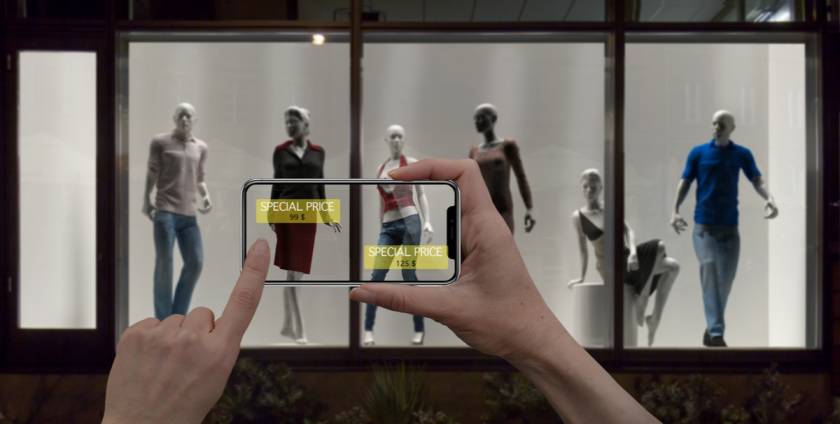How Can One Digitize Without Compromising the Art of Fashion



When one thinks about the industries that digitization has most impacted, fashion is probably not the first that springs to mind. However, with the rising use of clothing design apps and the ability to now design one’s clothes online, it can be argued that the link between fashion and technology is now stronger than ever.
The fashion industry poses a huge threat to the environment in terms of global greenhouse gas emissions. It is known to contribute to almost 4 percent of the total greenhouse emissions and also poses a great threat to other communities forming the ecosystem. However it must be remembered that a majority of this harm is done by retail behemoths who sell fast fashion, instead of luxury brands who contribute to the sustainable and ethical production of clothes.
Many people started buying clothes because of content creation and there is famous research by Barclays bank that states that in the UK, 9% of the customers who are shopping with credit cards, return their clothes just because they bought them for content creation. That is where social media started to trigger consumerism even more because it is just an instance of how so many clothes should not be produced.
When the pandemic hit, the fashion businesses and designers understood that retail will never be the same again. When the production of digital items is happening it is almost 97 percent fewer emissions of carbon dioxide than the physical items being produced. So basically in terms of sustainability, digital fashion can help.
The Sustainable Development Goals (SDGs) and Digitization of Fashion

Sustainability and digitization go hand in hand because they are both very crucial for the future success of fashion companies. Trends like 3D body scanners and 3D simulation software have kept fashion designers on their toes. Not only do they need to know how to cut and sew and knit but also their way around laptops and technology. The convergence of sustainability and digitization is essential. It is important that the full potential of the technologies available is understood. It also helps to understand how they are going to help the fashion sector and, simultaneously, how they would address the world’s most pressing challenges.
From Gucci to Chanel, Topshop to Primark, the clothing industry heavyweights rely on fashion forecasters for next season’s trends. But advancements in artificial intelligence are about to turn their art into a science. Cognitive computing is now able to recognize patterns that were previously inaccessible to humans. This would include studying consumer behavior thoroughly and keeping note of every pattern that emerges within the fashion trends. The retail behemoth H&M recently confessed to a 4.3 billion USD unsold stock mountain. Amazon plans to launch a design system that would be based on artificial intelligence. What this would effectively do is study trends and consumer buying patterns to understand consumer behavior and produce new designs accordingly. A Japanese software company has also introduced body measurement software that will ensure that the clothes one orders fits them perfectly. All of this could mean that the future wardrobe of most fashions consumers could consist of clothing items designed and sold by technology alone.
What does the digitization of fashion lack?
Forbes magazine covered an interview with the CTO of an app that consists of about sixteen billion buyers and sellers of fashion, called the Depop, Remo Gettini. Gettini has had the experience of working with brands like Nike, Burberry, and Tommy Hilfiger. He worked hand in hand with these big names to digitize their market and branding solutions by providing digital alternatives to design and merchandising. Gettini believes that the clothing design app has the potential of going above and beyond in terms of creativity if they choose to incorporate technology. It lacks accessibility to human-centric advancements and software that would adequately fit the nuances and ephemeralities of fashion design.
But the question that Gettini has always been faced with is how could the design or the valuation of a handmade item or design be expressed through 3D technology? There could be several lacunae that technology could introduce into fashion.
- The answer, Gettini believes, lies in the very fact that something like 3D design or digital designing stems from machine learning and Computer-Aided Design alternatives, which are not as intuitive or creative. Even the latest form of CAD in the market fails to bridge the divide between product design and the creative vision of the designer. The bridge has become seemingly vast and never-ending just because of the ephemeralities of clothing design apps and the sheer speed at which trends change, mostly due to social media and the short life span of clothing items due to e-commerce.
- The second problem lies in the generic solutions that these machine-aided designs provide as if fashion were like any other industry that needs digitization. Fashion is singularly different and needs a technology that could effortlessly bridge the gap between the designs that the designers create and the supply chain, without creating another discrepancy. Designers cannot be asked to drop their pen and paper approach instead of taking up a mouse or a digital pen, just because the CAD demands them to do so.
Gettini then also moves on to provide plausible solutions in his interview:
How to digitize the art of fashion without compromising on creativity:

- In his previous capacity as a digital solutions provider at Dreamworks, Gettini introduced the tablet and the digital pen to the designers. This meant that whatever they drew or sketched on the screen, the sketches would automatically digitize and mold around the designer’s creative vision. This not only helped in expanding the toolkit of the designers rather than molding their ways around technology but also helped in garnering solutions to the otherwise mechanical process of designing and converting them to clothes. Besides the texture, the effects and the colors could be effortlessly integrated into the clothing design app, which was not possible mechanically. Gettini categorically mentions that it is only through human-centric approaches that the technology digitizing the fashion industry can reach success.
- In terms of what else could be added to make the digitization process even more seamless is to hire designers adept in 3D design. These designers, when working in collaboration with the existing maestros of fashion design could produce work that would include the best of both worlds, i.e, old school creativity blended with the advancements that technology provides.
- It is imperative to understand that the digital design and the creative design produced by pen and paper are not isolated and should be integrated effortlessly and coherently. Three-dimensional design using CAD and CAM technologies has the potential of providing on-the-go designs if incorporated correctly within the designing process. This would not only bring rapidity in the process of production by eliminating manual errors but also eliminate the surplus in the production of clothes due to problems in physical designs.
Even the head of data and insights of Capgemini, Kees Jacobs, mentioned that while the issue of creativity is pertinent, digitization of fashion has helped better consumer experiences in retail portals like stores and e-commerce. But when it came to the actual designing and creation part, the target audience was less likely to make a change and veer towards technology.
Conclusion
We at Fashinza believe the potential for the fashion industry in adapting three-dimensional computer-aided design and CAM in its early stages of clothing design apps is quite high. This would yield faster and customized manufacturing, which would help reduce inventory waste because the designs would be made on-demand, without the excess time taken to physically design and manufacture it. Digitization thus entirely reduces the production time while reducing the production of industry surplus.
The challenge lies in the creative process, whereby designers refuse to compromise with their vision and yield to technological loopholes. Fashion, unlike other industries, is an art, and striking a balance between creative vision and practical execution has become very important in today’s day and age. Sustainability developmental goals issued by the United State have been the focus of every global superpower and the fashion industry needs to take an active part in it as well. The future of fashion is digitization but it is important to incorporate it within the designing stages as well and Fashioniza helps designers out with it. The 3D design is still absent from the curriculum of top fashion schools and this shift needs to be made slowly and consciously. It would thus take a few steps of advancement and compromise on both ends, from the techies, who should try to make the software more human-centric, and the designers, who need to find their way around technology.
If you need help with sourcing clothes, reach out to Fashinza.



















